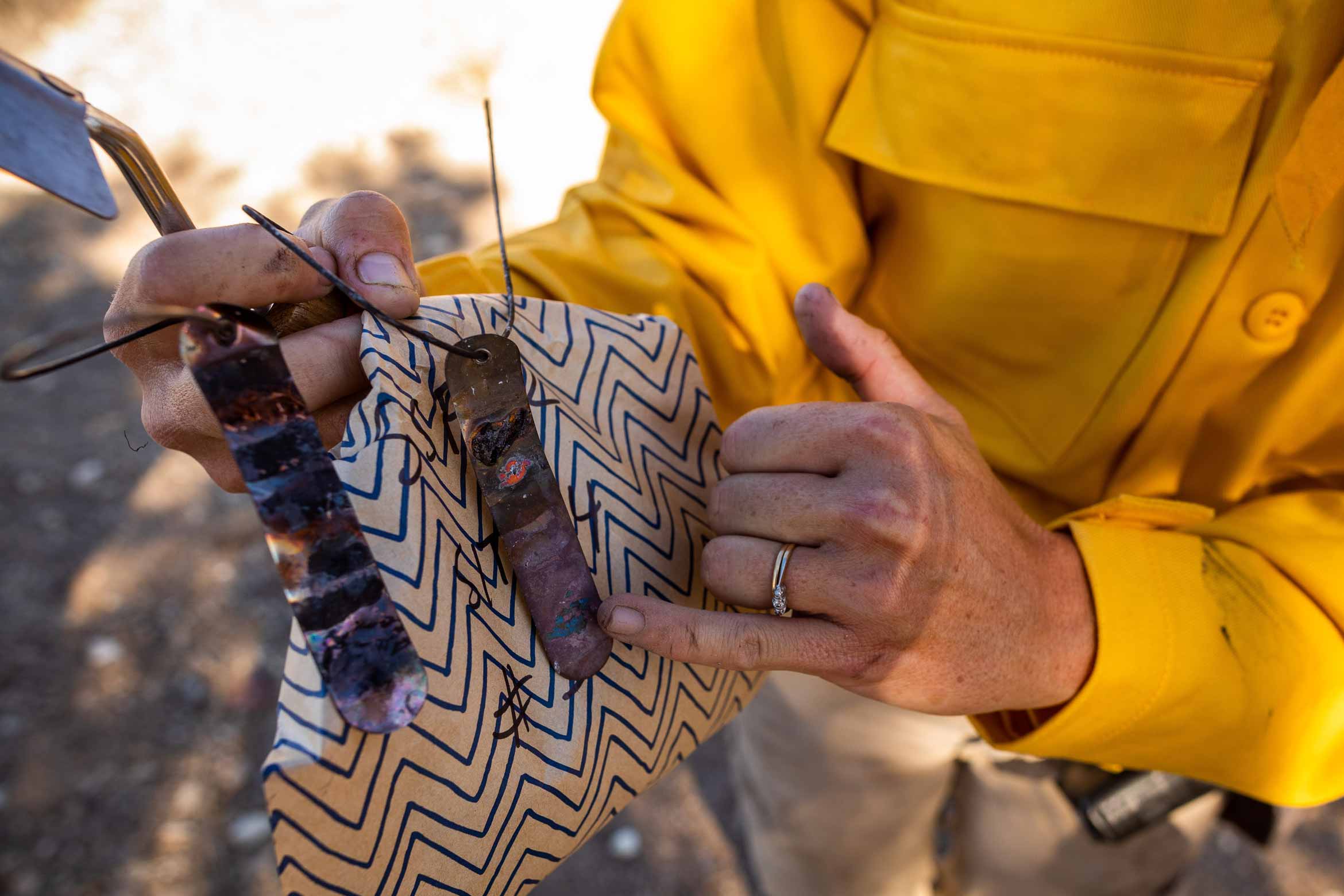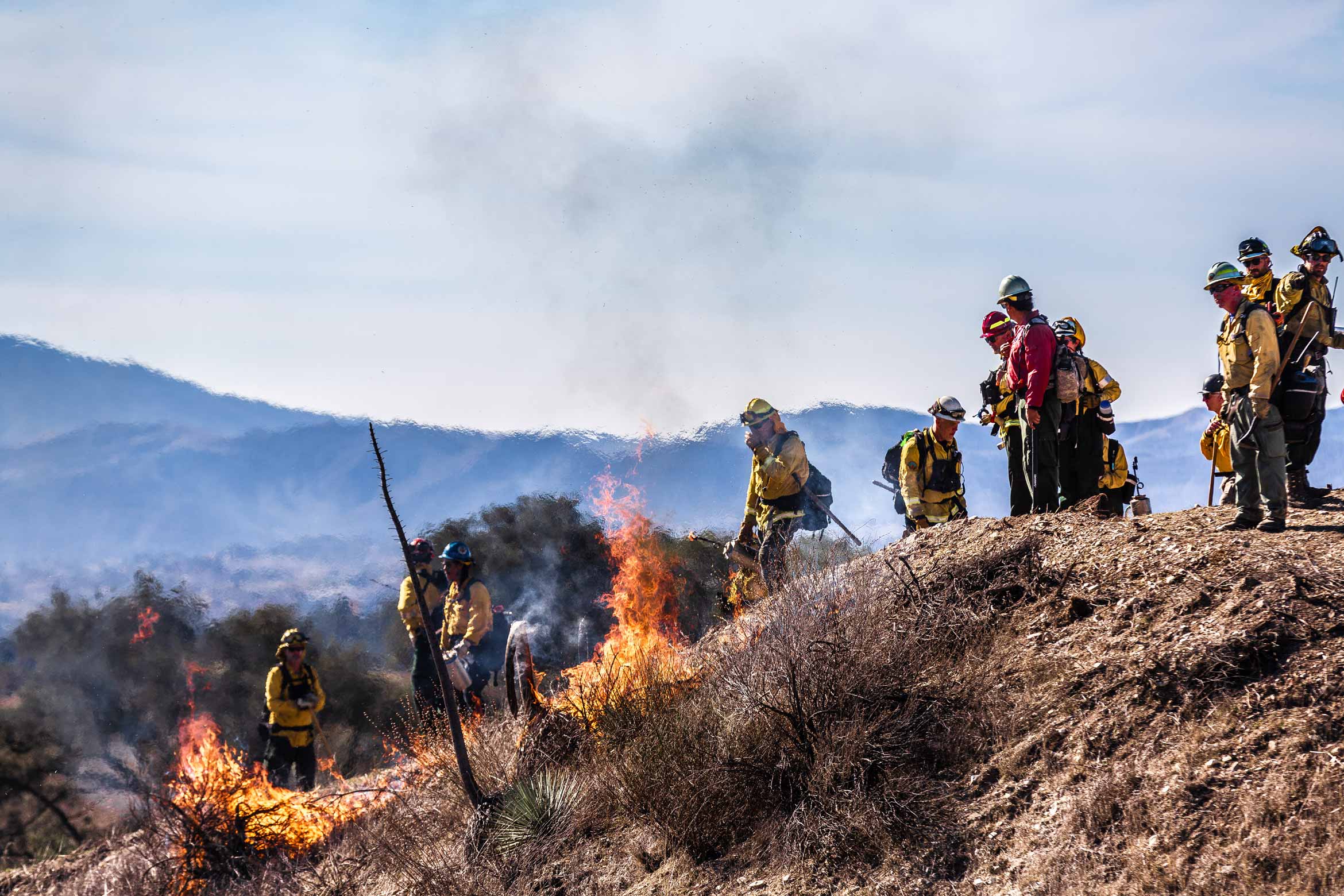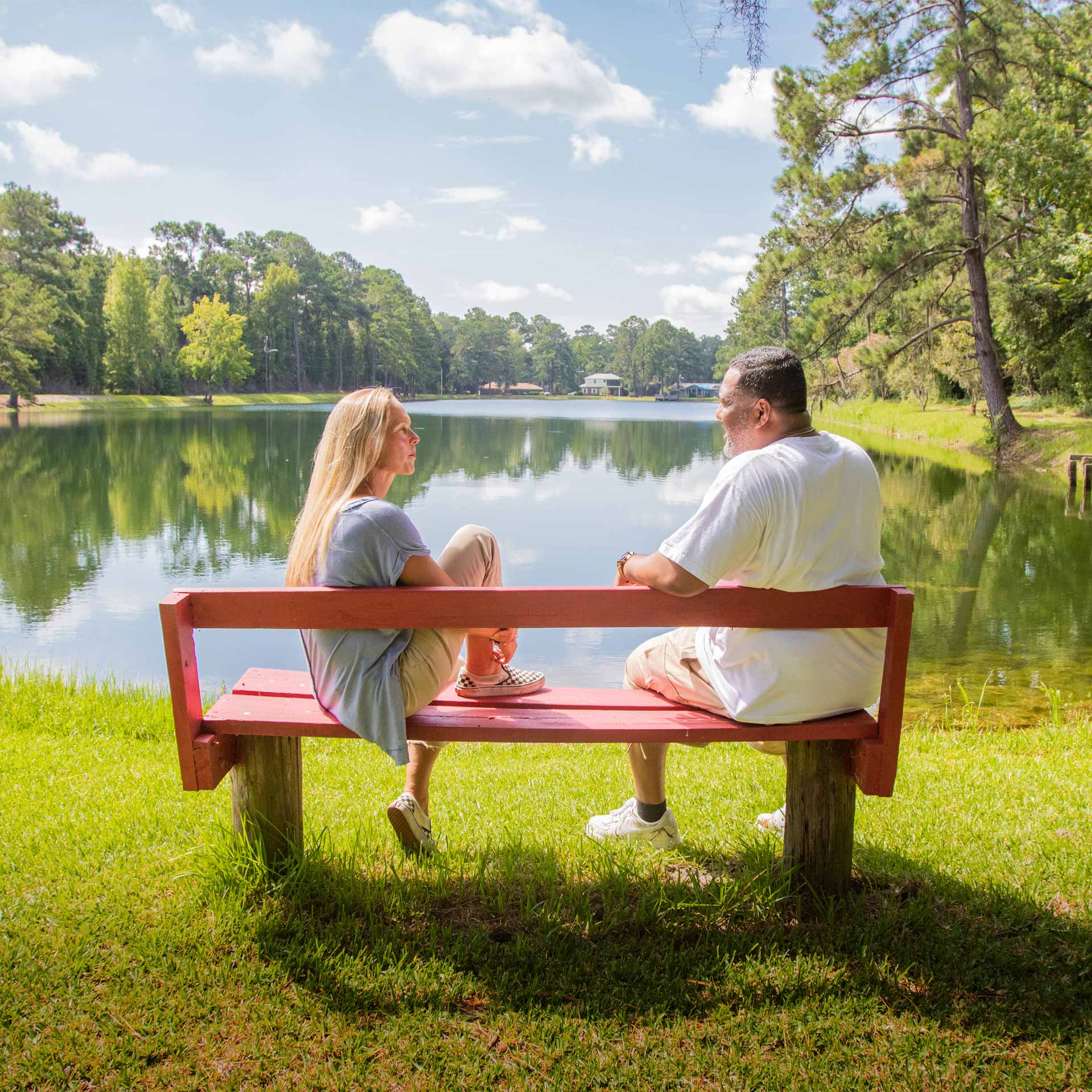Flames torched the hillside, igniting the dry chaparral at Sedgwick Reserve in California’s Santa Ynez Valley. Sagebrush and yucca caught fire like tinder as the flame front advanced, leaving charred snags and smoldering yucca stumps in its wake.
Taming Fire
Dozens of professionals hurried about, clad in Nomex gear with hoses and water trucks at the ready. Instead of nozzles, though, their gloves gripped drip torches with flames flickering at the ends of the spouts. They had lit the fire that now consumed the hillside, and they labored on to ensure it would spread. Resource managers are increasingly turning toward prescribed burns as a tool to maintain and restore landscapes and reduce the risk of wildfires. The technique stretches back thousands of years to the native peoples of North America. European Americans began to suppress the practice and, for more than a century, every spark and ember was aggressively extinguished. But now scientists and land stewards are beginning to understand the nuances of fire in the American West, and how we can put it to good use. When employed carefully, fire can be an incredibly versatile tool. The native tribes of California have used fire for millennia to promote a patchwork of ecosystems that’s supported a diversity of useful plants and animals. Today’s experts are rediscovering prescribed fire as a way to both encourage native growth and manage fuel loads, preventing firestorms from exploding beyond control. Prescribed burns also provide a unique opportunity for scientists to study the dynamics of fire and its effect on ecosystems. The resulting insights can guide land management, especially as climate change pushes the western U.S. toward drier, hotter conditions.
THE FRONT LINES OF DISASTER PREVENTION
At Sedgwick, a caravan of workers set off toward the western edge of the reserve, trudging up the dusty trail to the property’s edge. A line of fire hoses, laid out the day before, guided everyone to their places. Almost as soon as the crew began to drip liquid flames onto yucca and sage branches just below the ridgeline, the dry wood immediately ignited. Fire was on the landscape and smoke began billowing into the air. It was a bizarre sight for the uninitiated, to see unfettered flames dancing across the hillside, leaping from shrub to shrub. But this was no wildfire. It was a tame fire, harnessed like a beast of burden to do our bidding. “We’re ultimately in control,” says Santa Barbara County firefighter Eddie Luparello, as he surveyed the flames from the ridge crest. “For instance, starting the burn from the ridge forced our fire to travel downhill, against its natural inclinations.” Standing beside Luparello, UC Santa Barbara doctoral student Kaili Brande watched flames pass over instruments she had placed before the burn. Brande investigates how a landscape’s fuel structure, composition and biodiversity lead to different fire behaviors, and how those behaviors affect the severity of a burn. “Prescribed burns offer the rare opportunity to collect pre-fire data in addition to the post-fire data that’s normally available with wildfires,” Brande says. Luparello welcomed Brande’s efforts. “The beauty of doing this in conjunction with UCSB,” he says, “is that now we’re putting hard data into what was just a skill passed from one firefighter to another.” Hannah Etchells, an ecologist visiting from The University of New South Wales in Sydney, Australia, also was at Sedgwick to observe the prescribed burn. She concurred: “This is as close as you can get to a controlled experiment in fire ecology.”
‘A WAY OF SUCCEEDING’
The wildland of California is a realm of fire. It’s a rare Mediterranean climate region, with cool, wet winters and warm, dry summers. In a climate like this, fire exerts a strong environmental influence. “Adapting to fires becomes a way of succeeding,” says UCSB Distinguished Professor Frank Davis, a landscape ecologist who studies fire at Sedgwick — part of the UC Natural Reserve System — and directs its La Kretz Center for Research. California’s native Indians were intimately familiar with the effect fire had on the landscape and many used it for thousands of years to manage the land. They promoted ecosystems that favored useful plants, improved hunting and ease of travel, curtailed wildfire risks and reduced pests like ticks. “When we’re using fire on the landscape, you could really think about it more as a form of agriculture,” says Diego Cordero, the lead environmental technician for the Santa Ynez Band of Chumash Indians. “After these big fires here in the hills, you see flowers you probably hadn’t seen in decades popping up everywhere. A lot of those plants are actually our (Chumash) crops.” The lingering legacy of Indigenous management is a major reason we could successfully fight fires in the 19th and 20th centuries; European Americans and other settlers took control of a landscape that was well tended. But they imposed fire suppression and neglect, experts say, and the consequences have caught up with us.

Researcher Hannah Etchells shows off metals painted with heat sensitive paint, which are used to measure temperatures underground during a wildfire.
“You can’t fight these firestorms anymore,” says Jared Childress, program manager for the Central Coast Prescribed Burn Association, a project funded by Cal Fire and the UC Cooperative Extension. “All you can do is get out of the way.” Scientists still have a lot to learn about controlled burns. For instance, some burns may favor native plants while others could provide a foothold for introduced species. “Those are the kinds of things we need to learn about,” Davis says, “and research at Sedgwick Reserve is looking at effects on plants and animals while meeting other objectives such as reducing wildfire risk.” These insights will be crucial as climate change extends the wildfire season. The hot, dry, windy conditions that favor fire will become more common, increasing the frequency of wildfires. Acknowledging that burning any vegetation releases toxic carbon dioxide, Davis says, “The question is, ‘How would you like vegetation to burn?’ Burning is an inevitable feature of these landscapes. But with prescribed fires, you’re burning under more moderate, controlled conditions.” Wildfires are more destructive and mobilize more carbon than prescribed burns, and the vast majority of burning in California is still due to wildfire. “We burn tens of thousands of acres in prescribed fires,” Davis says. “Millions of acres burn each year in wildfires.”

“Starting the burn from the ridge forced our fire to travel downhill, against its natural inclinations.”
— Santa Barbara County firefighter Eddie Luparello
BACK AT SEDGWICK …
By early afternoon, a full 20 acres had burned in this round of prescribed fires. A few personnel continued patrolling the area after the flames had died down, stomping out embers and shoveling up smoldering snags. “Working on these prescribed burns speaks to a deep, ingrained part of our brain,” Childress says: “the part of our brain that stares at campfires for hours and never gets sick of it.” Now we’re harnessing our fascination with fire for the good of the landscape. Spreading knowledge and awareness among the public will be just as important as spreading fire on the ground. “It’s hard to change generations of culture and belief,” says Phil Dye, a retired fire captain now working as a prescribed fire specialist and ‘burn boss.’ “I mean, we all grew up with Smokey the bear. And Smokey says all fire is bad, and all fire must be suppressed.” Smokey still serves as the avatar of wildfire prevention, but the message he embodies is maturing. In 2001, Smokey’s tagline changed from, “Only you can prevent forest fires” to, “Only you can prevent wildfires.” The subtle difference reflects the nuances in our growing understanding of fire.
Fire Followers
For more than a decade, UC Santa Barbara's Cheadle Center for Biodiversity and Ecological Restoration has conducted prescribed burns on the campus's Lagoon Island as a means of controlling non-native grasses and establishing native bluff scrub vegetation. Recently they've focused, too, on building a diverse pallet of native annual wildflowers that support native pollinators. Their work is paying off, as seen in this video featuring Lagoon Steward Chris Berry — and a whole lot of lovely wildflowers — filmed about six months after their last burn cycle.


